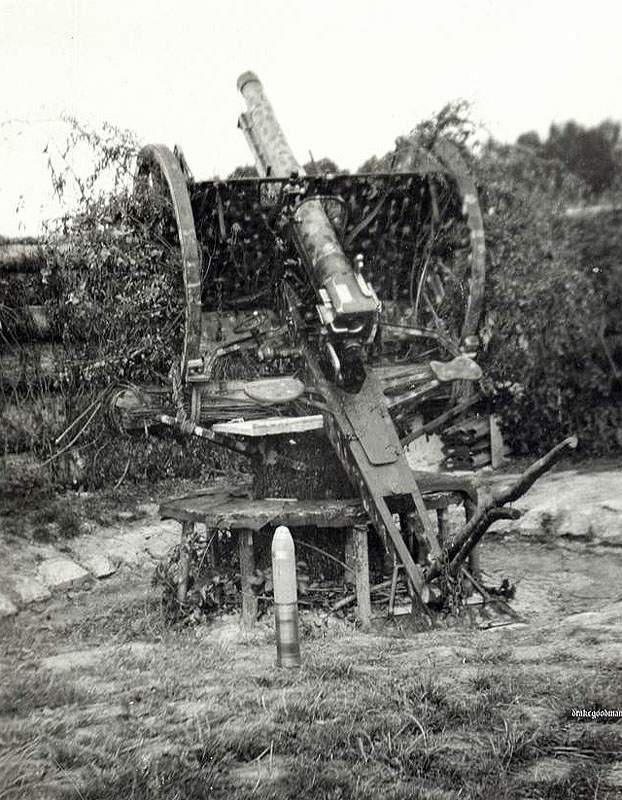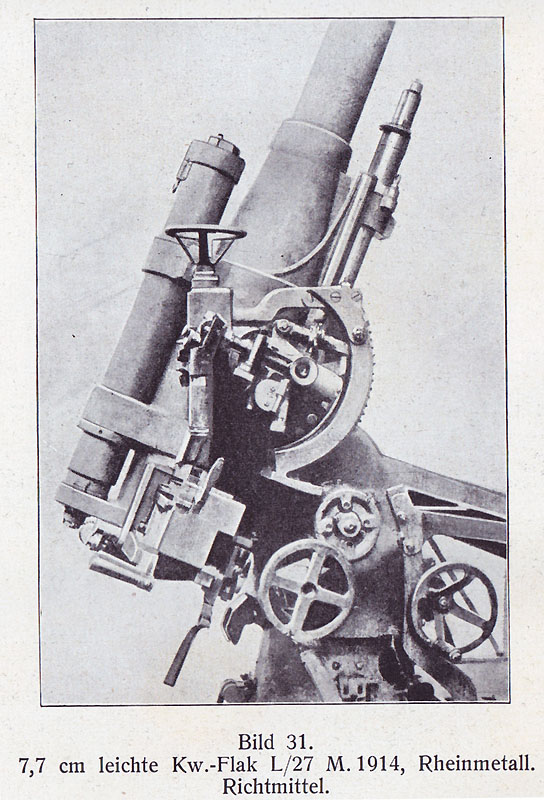| 7,7cm leichte Feld Kanone (l.F.K.) 96 n/A Production Cartridge Casing | ||
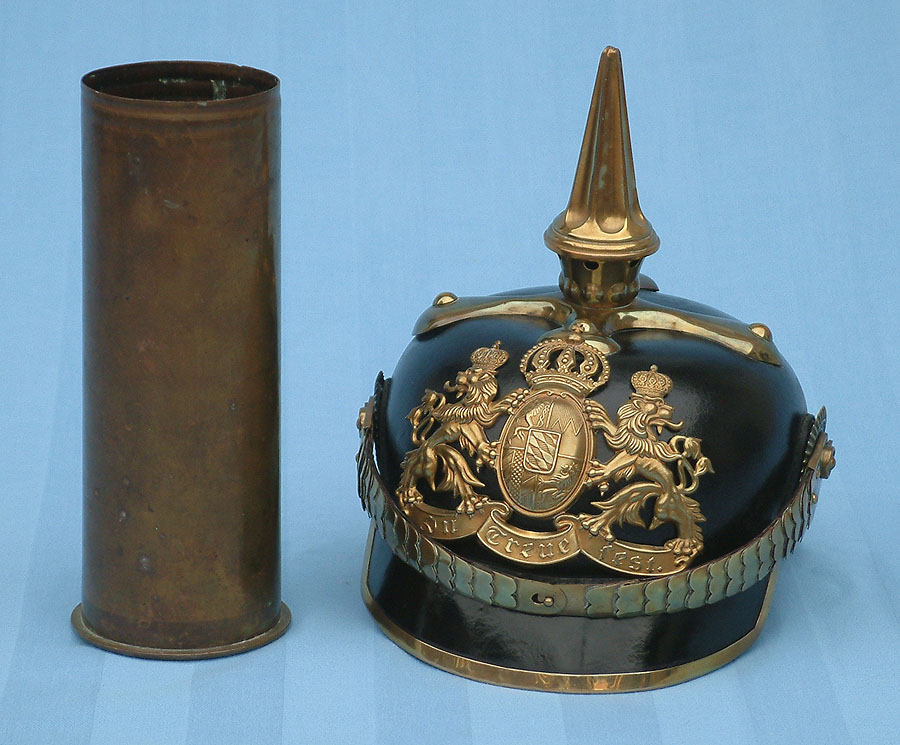 | ||
| 7,7cm cartridge casing for the Krupp leichte Feld Kanone (l.F.K. = light field cannon) 96 n/A (neuer Art = new model). In 1905 the Feldartillerie switched to a new projectile, the Einheitsgeschoss FH-G 11 which was a combination shrapnel and high explosive which required a stronger cartridge casing. This is why the st" (stark) marked thicker casings were introduced in 1905. These cartridge casings are considerably heavier than the paper thin and very light 1st production 7,7cm l.F.K.96 n/A cartridge casings. To illustrate the size, the casing is photographed with an original Model 1896/1914 Bayerisches (Bavarian) Mannschaften (Other Ranks) Pickelhaube for 7 Feldartill. - Regt. Prinz-Regent Luitpold, München, I. Armee-Korps. 7,7cm leichte Feld Kanone (l.F.K.) 96 n/A Cartridge Casing Data:
|
||
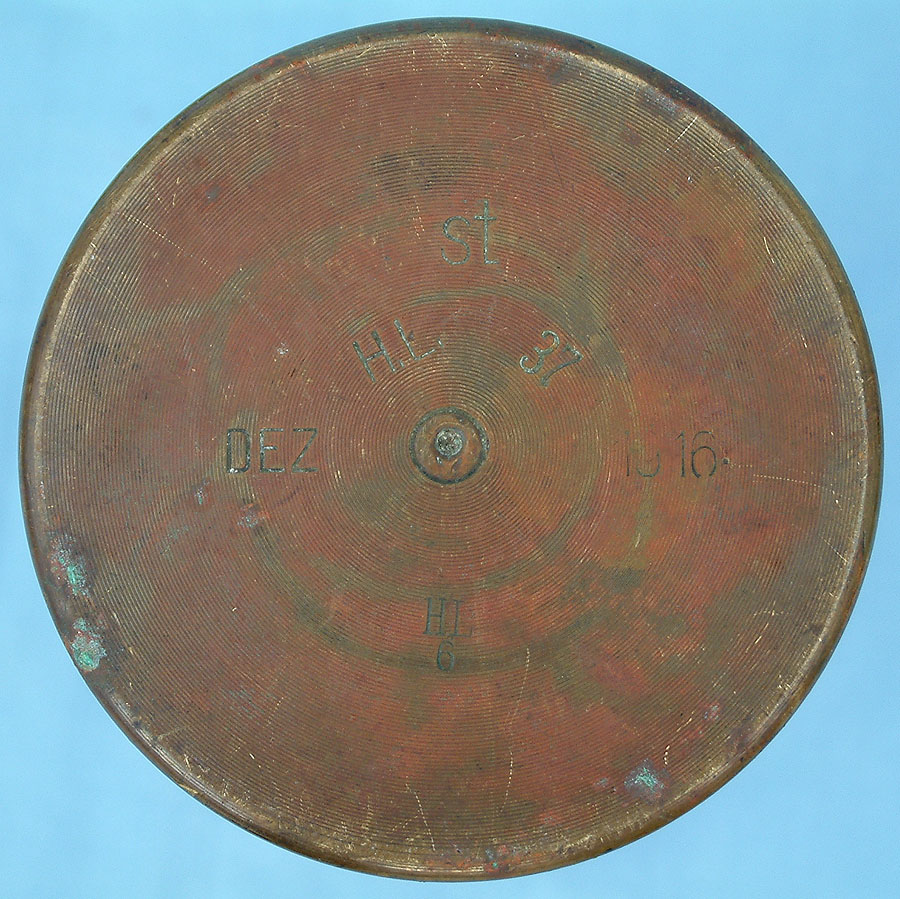 | ||
| A close-up of the head stampings on the base. Around the primer it is marked: "HL" for the cartridge factory of Haniel Luege Düsseldorf and manufactured in "DEZ. 1916" (December 1916). "37" is the lot number of that batch of cases which were made during 1916. "HL6" is the control/inspection mark of the manufacturer Haniel Luege Düsseldorf. "st" (stark=strong) means that the casing was strengthened. 1st production 7,7cm l.F.K.96 n/A cartridge casings manufactured until 1905 were much thinner and lighter. | ||
| 7,7cm leichte Feld Kanone (l.F.K.) 96 n/A Wartime Service; Field & Flak | ||
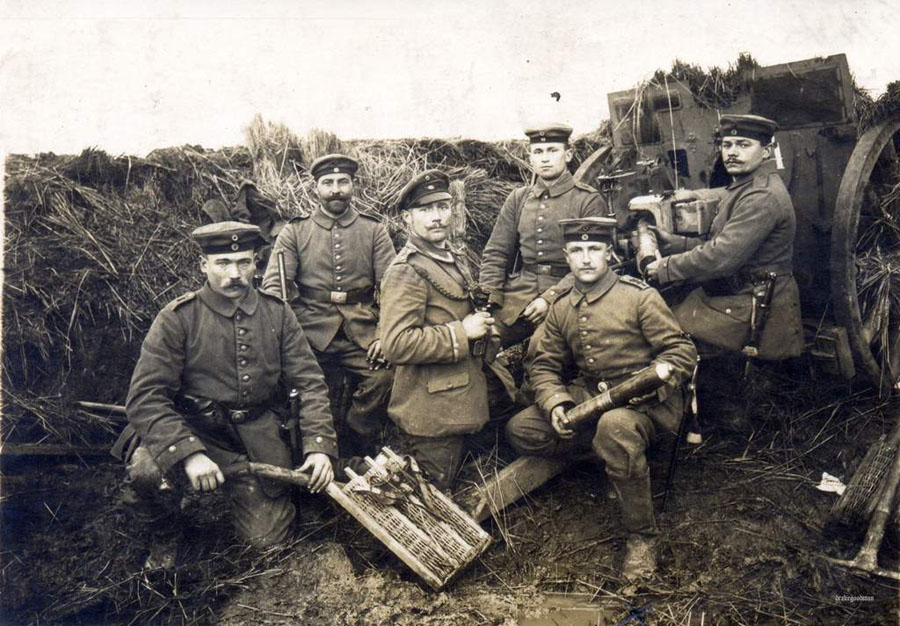 Photo courtesy Brett Butterworth Photo Archives | ||
| 7,7cm leichte Feld Kanone (l.F.K.) 96 n/A During the Great War the 7,7cm leichte Feld Kanone (l.F.K.) 96 n/A (neuer Art = new model) light field cannon used by the German Feldartillerie (Field Artillery) served well in the opening months where the situation was fluid, however, it proved to be less useful during the static trench warfare due to the flat trajectory and limited range. Although it served throughout the Great War, where once Feldartillerie Batterie (battery) lined up in open fields to pour fire down on enemy formations, now individual cannons were dispersed and camouflaged and always at risk of the highly effective Allied counter battery fire. | ||
| ||
 Photo courtesy Dr. Hannes Täger Photo Archives | ||
| 7,7cm l.F.K. 96 n/A Flak Schnetzler-Sockel Later developments introduced purpose-built platforms for the 7,7cm l.F.K. 96 n/A in a Flak role called Schnetzler-Sockel. In the photo above, a 7,7cm l.F.K. 96 n/A is mounted onto a Schnetzler-Sockel which was a movable platform which could be traversed by the crew, who have all posed with their cannon for the photo. | ||
 | ||
| 7,7cm Kraftwagenflak A further development was the introduction of Kraftwagenflak (vehicle Flak). Krupp and Rheinmetall pioneered the mobile Flak with two versions of the 7.7 cm leichte Kw.-Flak L/27: one version with a Krupp cannon and a Daimler truck and engine as the platform, and the other with a cannon made by "Rheinische Metallwaaren und Maschinenfabrik Düsseldorf" (Rheinmetall) with an Erhardt truck as the platform. In this remarkable photograph a crew poses with their Rheinmetall 7.7 cm leichte Kw.-Flak L/27 on a Erhardt truck with an 4 cylinder Viertakt-Motor made by Firma Heinrich Erhardt. Of interest, the splotch-pattern camo M16 steel helmet has been painted to match the truck. On the cannon the sights are visible with a pile of 7,7cm l.F.K.96 rounds beside the vehicle on the ground. On the crew, the FLAK straps are clearly visible, as are the metal truck collar insignia on the Kraftfahrer driver. Most interesting, is the FLAK symbol painted on the truck bonnet. | ||
| ||
 |
